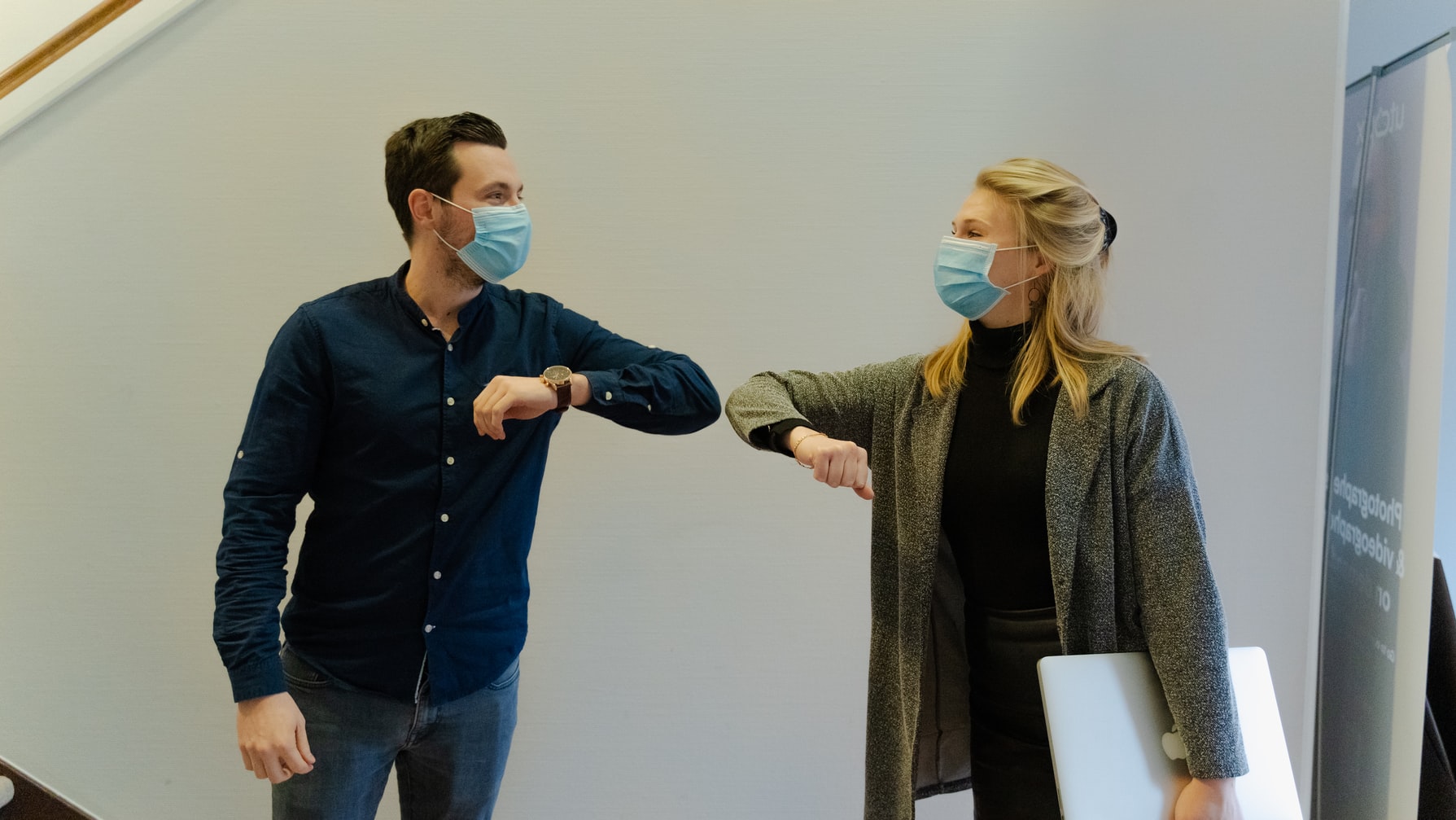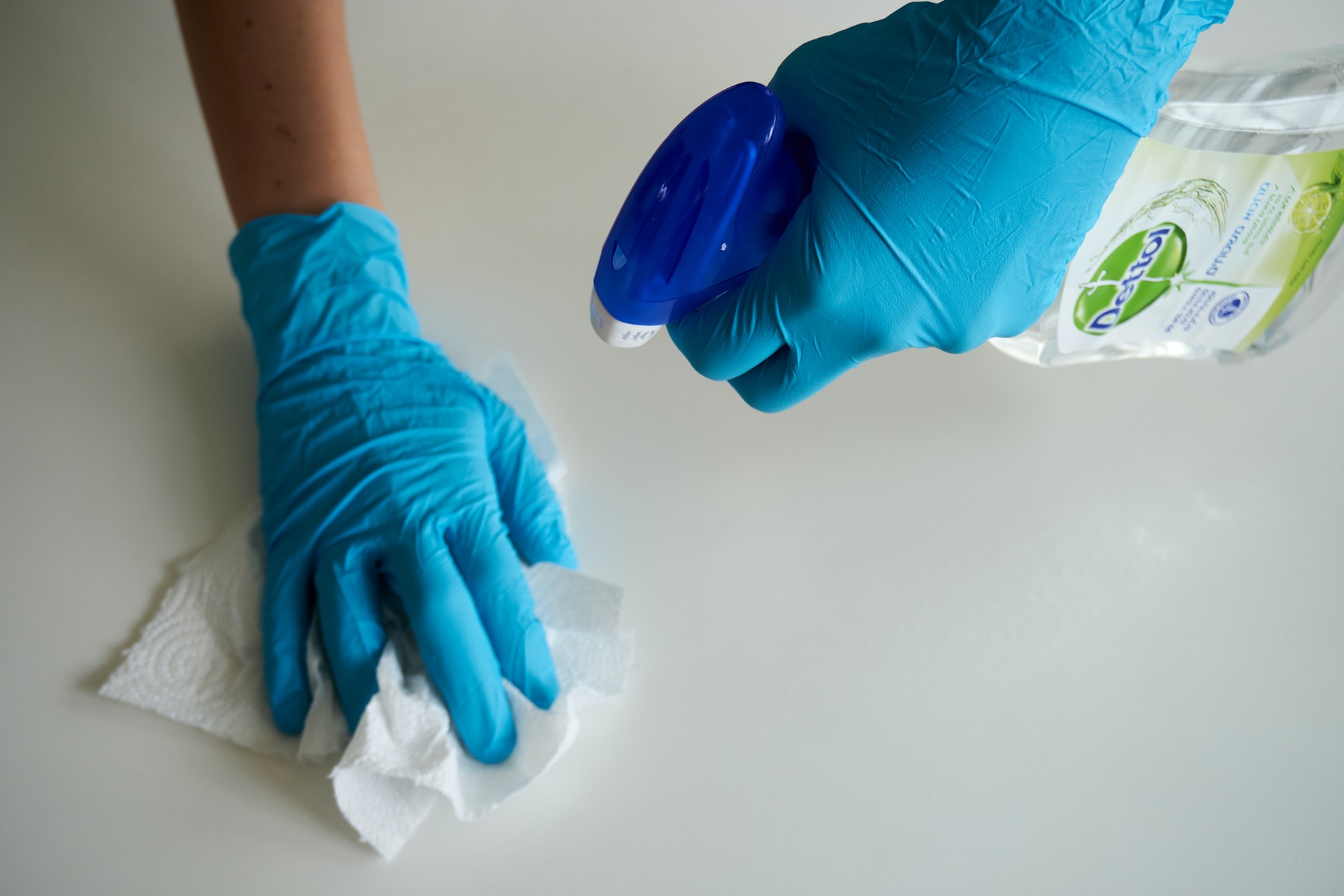BLOG
With restrictions lifted, what should COVID management look like now?
Written on 15 September 2021

While most COVID restrictions have been lifted, coronavirus remains a workplace hazard that needs to be managed. So what’s expected of employers now?
This blog outlines summarises key actions in the government’s guidance for continuing to work safely in offices and similar indoor environments during coronavirus.
While not compulsory, it’s still wise to follow the guidance, not least because it may help you demonstrate compliance with health and safety law, which is enforceable. Priority actions to keep staff protected include:
1. Review your risk assessment
As an employer, you must by law protect workers and others from risks to their health and safety. This includes:
- Completing a suitable and sufficient assessment of the COVID-19 risks in the workplace; and
- Identifying controls to manage that risk.
Your COVID-19 risk assessment will help you to decide if you have done everything reasonably practicable to keep people safe. You are also required to consult workers on health and safety matters, so involve them in the risk assessment process; talk and listen to them about the work they do and how the risks from COVID-19 are being managed.
To carry out a “suitable and sufficient” risk assessment, consider the different ways COVID-19 can spread and put measures in place to reduce this risk. The main way the virus is spread is through droplets and aerosols. Surfaces and belongings can also be contaminated with COVID-19.
Use your risk assessment to identify any adjustments or further improvements you should make. Risk assessments are living documents, and employers are required to review the measures they have in place to make sure they are still working or if there are changes in the workplace that could lead to new risks.
Share your risk assessment results with your workforce. If possible, publish the results on your website. All employers with over 50 workers are expected to do so. All businesses should be able to show their workers and visitors that they have:
- Properly assessed their risk; and
- Taken appropriate measures to mitigate this.
Related Content
Do you need support?
Speak to us for an honest, no obligation chat on:
0345 226 8393 Lines are open 9am – 5pm
2. Provide adequate ventilation
In poorly-ventilated spaces, residual virus can remain in the air after an infected person has left, increasing the risk of COVID-19 spreading. The more fresh air that’s brought inside, the more diluted any airborne virus will become. Maximise the supply of fresh air by:
- Fully or partially opening windows, air vents and doors;
- If using mechanical ventilation, ensuring that your systems are set to maximise fresh air and minimise air recirculation; and
- Taking steps to improve fresh air flow in poorly-ventilated spaces.
The Health and Safety Executive (HSE) has published guidance on how to identify and improve poorly ventilated spaces. In some places, a CO2 monitor can help to identify if a space is poorly ventilated. Read the advice on air conditioning and ventilation on the HSE’s website.
If ventilation can’t be improved, consider restricting the number of people accessing and/or the amount of time spent in these spaces, or simply stop using them. Encourage the use of outside spaces where practical.

3. Reduce worker contacts
Mitigate the risk of COVID-19 by reducing the number of people your workers come into contact with. Ways to do this include:
- Using ‘fixed teams’ or ‘partnering/cohorting’ so that individuals only work with a few others.
- Reviewing layouts, using screens or barriers to separate people, or using back-to-back or side-to-side working, instead of face-to-face.
If possible, assign workstations to particular individuals. Where they need to be shared, clean them between each user.
4. Continue to clean more often
Keep your workplace clean and prevent the spread of COVID-19 from contaminated surfaces by:
- Cleaning work areas and equipment between uses;
- Determining the required cleaning process for expensive equipment that can’t be washed down – design protection around machines and equipment;
- Frequently cleaning objects and surfaces that people touch regularly, such as door handles and keyboards; and
- Clearing workspaces and removing waste and belongings from work areas at the end of shifts.
To help maintain good hygiene through the working day, consider:
- Using signs and posters to remind people to wash their hands frequently; to not touch their faces; and that they should cough or sneeze into a tissue that is binned safely, or into their arms if a tissue isn’t available.
- Providing hand sanitiser in multiple accessible locations, as well as washrooms.
- Enhancing cleaning for busy areas.
- Providing more waste facilities and more frequent rubbish collection.
- Making hand sanitiser available on entry and exit.

5. Encourage face coverings
While face coverings are no longer required by law, the government expects and recommends that people continue to wear them in crowded, enclosed spaces. If worn correctly, this can reduce the risk of transmission.
Encourage the use of face coverings, for example through signage. This is especially important in enclosed and crowded spaces where staff may come into contact with people they don’t normally meet. Be aware that workers and clients may choose to not wear a face covering in the workplace – see our recent blog on whether you can compel employees to wear a face covering at work for guidance on this issue.
In supporting the wearing of face coverings, encourage workers to:
- Regularly wash their hands thoroughly with soap and water or use hand sanitiser before putting on face coverings – again, do this before and after removing them;
- Avoid touching their faces or face coverings – they otherwise risk contamination with germs from their hands;
- Change their face coverings if they become damp or they have touched them; and
- Change or wash their face coverings daily.

6. Communicate
Make sure all workers understand your COVID-related safety procedures. Clearly, consistently and regularly explain all implemented or updated safety measures. Use visual communication to explain changes, for example whiteboards or signage. As well as providing a constant reminder of good practice around the workplace, doing so reduces the need for face-to-face communication.
You will likely need to engage with your workers on an ongoing basis. This includes dealing with employee representatives. Do this to monitor and understand any unforeseen impacts of changes to working environments.
Be aware of workers’ mental as well as physical health. Mental health is important, especially during such uncertain times. The government is directing people to the NHS website for guidance on coronavirus and wellbeing, which may provide a helpful starting point when thinking about the practical measures you can implement to support staff.
These are just some of the actions you can take to make your business safer during coronavirus, but the exact steps you take will be down to your environment and the sorts of activities you undertake. Make sure to refer to the guidance for your sector for more specific advice, and if in doubt, seek specialist support.
Stay safe and compliant with specialist support
COVID has reiterated the importance of good health and safety management. It’s also prompted many employers to reflect on their current arrangements and seek specialist support to keep their organisation operating safely and compliantly during the pandemic and beyond.
With HSE inspectors carrying out nationwide compliance checks to ensure employers are taking the necessary steps, our fixed-fee Health & Safety service gives you access to a dedicated support to make meeting your obligations easier.
For peace of mind, call 0345 226 8393 or request your free consultation using the button below.












